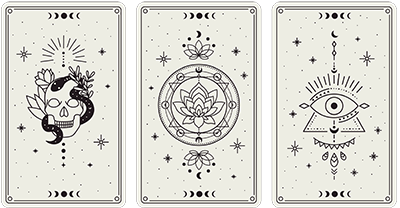Mindfulness Techniques for Daily Well-being

In the hustle and bustle of modern life, stress has become a common companion for many. The pursuit of a happy and balanced life often leads us to look for solutions in various places, yet one of the most effective practices is surprisingly within us—mindfulness. Practicing daily mindfulness is an ancient technique that has infiltrated contemporary wellness practices due to its profound benefits on mental, physical, and emotional health. This article delves into the essence of mindfulness and outlines practical techniques to incorporate it into your daily routine to foster well-being.
What is Mindfulness?
Mindfulness is the practice of intentionally focusing on the present moment without judgment. It involves being acutely aware of our thoughts, emotions, sensations, and environment with a gentle, nurturing lens. By anchoring ourselves in the ‘now,’ we can observe our experiences from a place of calmness and clarity rather than reactivity.
The Benefits of Practicing Daily Mindfulness
Research has shown that incorporating mindfulness into daily life can reduce stress, improve mental clarity, enhance creativity, and even strengthen the immune system. It’s also linked to improved relationships and greater emotional intelligence as it allows for increased empathy and understanding towards oneself and others.
Mindfulness Techniques for Everyday Life
1. Mindful Breathing
One of the simplest ways to practice mindfulness is to focus on your breath. Find a quiet place, sit comfortably, and take deep, slow breaths. Inhale through your nose and exhale through your mouth. As you breathe, pay attention to the rise and fall of your chest and the sensation of air passing through your nostrils. Whenever your mind wanders, gently bring it back to your breath.
2. Sensory Mindfulness
Sensory mindfulness means becoming fully aware of what you’re sensing in a given moment. This could be during your morning shower, when eating a meal, or while walking outside. Notice the textures, tastes, sounds, sights, and smells. How does the water feel as it cascades over you? How does the food taste on your tongue? What scents are carried by the breeze?
3. Body Scan Meditation
A body scan is a technique that involves mentally scanning yourself from head to toe, observing any discomfort, tension, or sensations without trying to change them. Lie down comfortably, close your eyes, and slowly guide your attention through each part of your body. Start from your toes and move upward. Acknowledge how each section feels but resist the urge to judge or alter those feelings.
4. Mindful Movement
Yoga and tai chi are examples of mindful movement practices. These exercises combine physical movement with breath control and mental focus. They help you stay present as you move and can be particularly beneficial if you find it challenging to sit still during more traditional forms of meditation.
5. Mindful Listening
Mindful listening involves fully concentrating on the sounds around you or on someone speaking without planning a response or getting distracted by other thoughts. When engaging in conversation, listen to understand rather than reply. This not only improves communication but also helps deepen your connections with others.
6. Gratitude Reflections
Gratitude is a powerful aspect of mindfulness that focuses on appreciating what you have in the present moment. Spend some time each day reflecting on things you are thankful for. This could be as simple as a sunny day or as significant as the support of loved ones.
7. Journaling
Writing down your thoughts and feelings can be a mindful exercise that helps you process emotions and events of the day. It encourages reflection and provides an opportunity for self-expression without external judgment.
8. Digital Detox
Set aside time each day to disconnect from electronic devices. This break from digital stimulation allows you to reconnect with yourself and your environment without distractions pulling your attention away from the present.
Integrating Mindfulness into Your Routine
To gain the benefits of practicing daily mindfulness, consistency is key. Start with short sessions—even just a few minutes—and gradually increase them over time. Find specific times in your day when you can commit to these practices, such as during your morning routine or right before bed.
Overcoming Challenges
It’s normal for your mind to wander while trying to remain present. Rather than getting frustrated, acknowledge this as a natural occurrence and return to the technique you’re practicing. With time and patience, maintaining focus will become easier.
Conclusion: A Journey Toward Present Living
Incorporating mindfulness into your daily life isn’t about doing more; it’s about being more—more present, more aware, and more intentional with your actions and thoughts. As you continue on this journey of practicing daily mindfulness, remember that each moment offers a new opportunity for growth and well-being.
Start small and be kind to yourself as you explore different techniques. Over time, you’ll likely notice a shift in how you relate to both internal and external experiences—a shift that fosters peace, balance, and a deeper appreciation for life’s simple pleasures.
By embracing these mindfulness techniques for daily well-being, you’re not just enhancing your own life—you’re contributing to a more conscious and compassionate world, one mindful moment at a time.
















